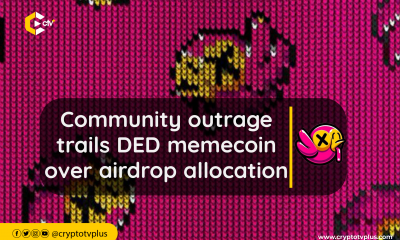News
Trappist launches cross-chain testing infrastructure on Polkadot

The team behind Trappist announced the launch of the cross-chain app at the Sub0 2023 event. According to Hector Bulgarini, full stack blockchain developer at Parity Technologies, the Trappist has evolved and has become an essential part of the Parity Technologies ecosystem.
He added that Trappist, which began as a simple project, was created as a parachain runtime for testing cross-chain interactions, especially with XCM.
While it has become a successful project, he noted that it’s crucial to understand that Trappist isn’t intended to be a production-ready parachain. Instead, it serves as an inspiration and learning resource for developers.
Evolution of Trappist
Trappist’s journey involved transitioning from a local testing chain to Rococo, a live testnet chain that provides valuable experience. This process involved various stages and considerations.
Rococo is a public testnet, jointly maintained by Parity Technologies and the community. It serves as a platform for testing both the parachain consensus process and community-built parachains.
He noted that the journey began with selecting the right Polkadot release to use. The team chose a release that included XCMB2 and Wasm 1.5 to experience live migration to XCMB3 and Wasm 2.32.
Architecture of Trappist
Hector went further to say that Trappist consists of two main components: “Trappist Runtime” and “Stout.” Trappist Runtime serves as a local chain, similar to a fresh ZombieNet network.
The benefit here is that it doesn’t deal with persistent data or runtime upgrades. If issues arise, it can easily be restarted.
On the tokenomics of Trappist, he said that it uses tokens in its testing environment, and while it’s not real money, it’s essential to define how these tokens function. He added that the team chose to have a fixed supply of 10 million Hoops.
Another aspect he talked about was that configuring fees in Trappist involves defining how fees are calculated and distributed. This process can be complex, depending on the use case.
While Trappist chose to use fixed fees for simplicity, he advised the audience to understand how fees work and configure them accordingly.
Other aspects of Trappist
Speaking about benchmarking, he said that Trappist needed to create benchmarks for its runtime to ensure the weights matched expected ranges.
Benchmarking helps identify performance bottlenecks and fine-tune the runtime.
Benchmarking refers to the process of measuring and comparing the performance of different Web3 applications, protocols, or networks.
It can be used to evaluate the speed, efficiency, and reliability of Web3 technologies, and to identify areas for improvement.
Also, Trappist closely monitors Polkadot releases to stay up-to-date with the latest features and improvements.
It does this by creating a new release branch, upgrading dependencies, and ensuring all migrations are in place. He pointed out that users need to analyze how each release impacts the project and adapt accordingly.
Finally, he noted that Trappist’s journey from a local testing chain to a live parachain has been a transformative experience. It highlights the complexities and considerations involved in developing a production-ready parachain.
Trappist serves as a valuable learning resource, and the team plans to share their insights through a Trappist Block Series on the Parity Technologies forum.
Read also; USDC expands to Polkadot Asset Hub with Circle’s launch

























Pingback: Trappist launches cross-chain testing infrastructure on Polkadot by Chuks Nnabuenyi Jr – CryptoTvplus Events: NFT, DeFi, Bitcoin, Ethereum, Altcoin Events